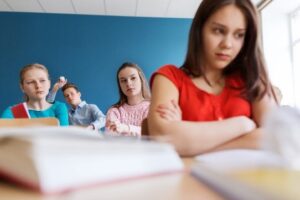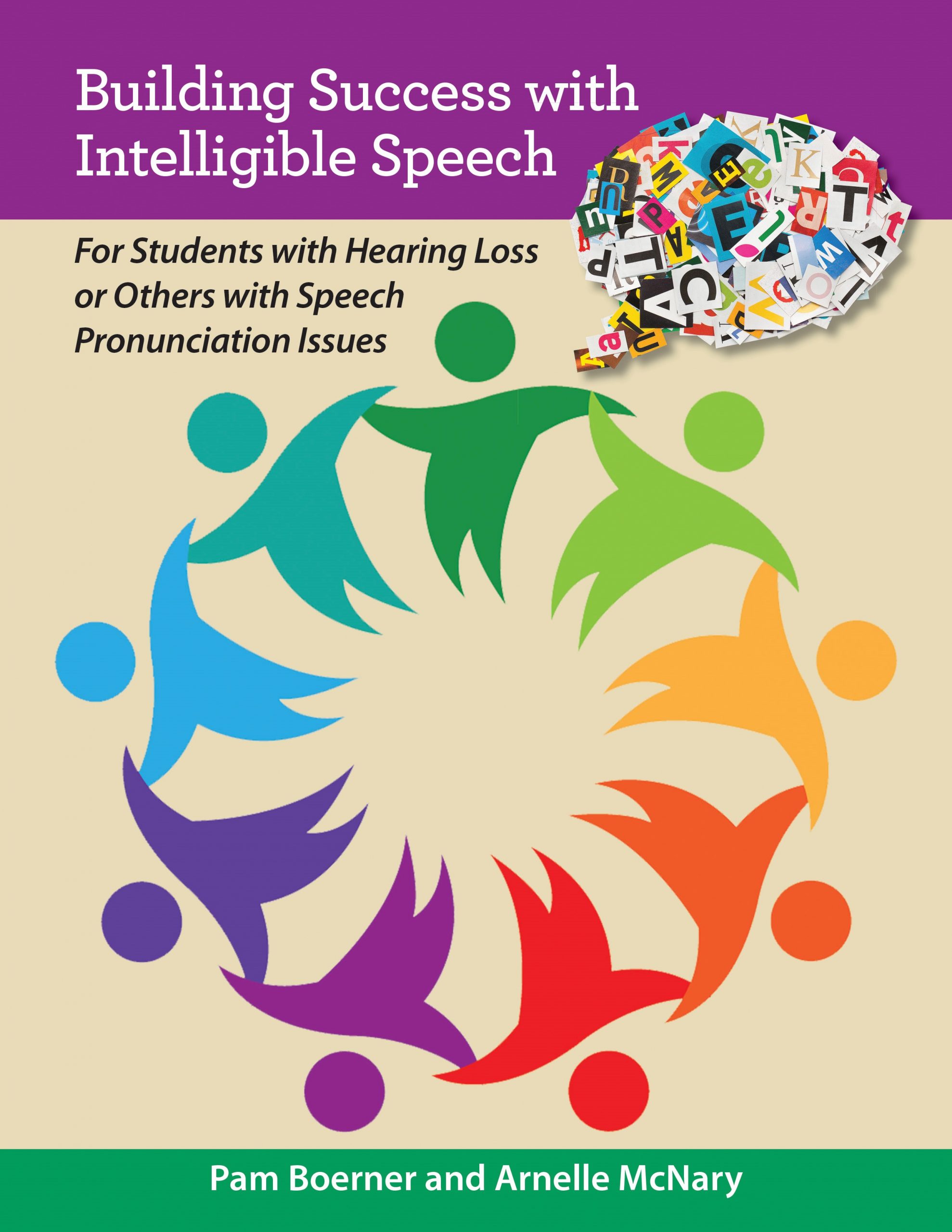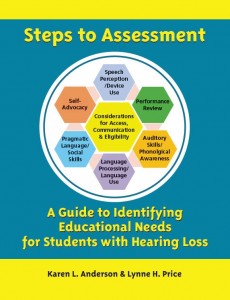Related Products
For Professionals
- Amplification
- Assessment of Student Skills, Challenges, Needs
- Early Childhood: Infants, Toddlers, Preschool
- Hearing Loss – Identification, Impact and Next Steps
- IDEA Law Summary Information
- Language and Speech Development Issues
- Legal Issues in Serving Children with Hearing Loss
- Listening (Auditory Skills) Development
- Planning to Meet Student Needs
- Self-Advocacy Skills for Students with Hearing Loss
- Self-Concept: How the Child with Hearing Loss Sees Himself
- Social Skills
- Speech Perception & Learning
Related Teacher Tools Takeout Items
One Cost of Being the Lone ‘DHH Kid’ & the Need to Assess Social/Emotional Issues
 Increasingly, students with hearing loss are educated in their neighborhood schools and often the only student in their grade or school to use hearing devices or sign language. They are at higher risk than peers for teasing, and often have difficulty developing a healthy identity as a person who has a hearing loss. A thorough evaluation of educational performance includes considering social/emotional issues. Only looking at grades and receptive/expressive language is NOT an in-depth assessment to identify all needs. Why are children with hearing loss prone to these issues? What ARE the concerns we should be trying to identify? What are some means to identify social/emotional issues occurring in students with hearing loss?
Increasingly, students with hearing loss are educated in their neighborhood schools and often the only student in their grade or school to use hearing devices or sign language. They are at higher risk than peers for teasing, and often have difficulty developing a healthy identity as a person who has a hearing loss. A thorough evaluation of educational performance includes considering social/emotional issues. Only looking at grades and receptive/expressive language is NOT an in-depth assessment to identify all needs. Why are children with hearing loss prone to these issues? What ARE the concerns we should be trying to identify? What are some means to identify social/emotional issues occurring in students with hearing loss?
Social/Emotional Issues
Social interaction is complicated! It involves social cognition to be able to ‘read’ social situations, theory of mind to be able to infer the perspectives of others, pragmatic language development to be able to communicate in a way that is socially appropriate and not awkward, and finally, a positive self-concept to believe that you have something of value to contribute to the social group. When we consider assessing student needs we need to think about performance in each of these areas. As we work with students to improve outcomes and educational performance we need to be sure that development in the components of social interaction are continuously being addressed.
Children with hearing loss do not ‘overhear’ incidental language as well as peers without hearing loss. This makes them vulnerable to language issues, including social language issues. Research suggests that children with hearing loss may have a 4-year delay in pragmatic language learning by the age of 7. It is not surprising then that students with hearing loss are often considered to have immature social skills. Self-concept issues also may be significant, especially for students mainstreamed into their neighborhood schools without contact with peers who have hearing loss. Development of our identity stems from the groups we consider ourselves to be a part of and without a connection to DHH peers a student’s identity and acceptance of the hearing loss is unlikely to develop in a healthy manner. All of these together can impact self-concept at school. Students may feel lonelier in comparison to peers and/or less satisfied with their social status in school as a result.
Teasing
 Teasing can be friendly or unfriendly. Everyone experiences teasing while growing up. If there is an obvious difference, a child is more likely to be teased by peers. According to a 2014 US status report*, 15% of boys and 16% of girls are verbally bullied 2-3 times per month or more. Bullying usually occurs on the playground, during lunch or in hallways, but a third of these children also experience bullying remarks in the classroom while the teacher is present. It is not a question of IF a student with hearing loss will be bullied, it is a reality that it WILL occur. A 2013 study** reported that students who are deaf and hard of hearing experience bullying rates 2-3 times higher than those reported by hearing students AND that school personnel intervened less often when this behavior occurred. Pointedly developing self-confidence and early preparation for children to be resilient to teasing or bullying situations is unfortunately necessary for children with hearing loss if they are to emotionally persevere as ‘one and onlies’ in their mainstream classroom environments.
Teasing can be friendly or unfriendly. Everyone experiences teasing while growing up. If there is an obvious difference, a child is more likely to be teased by peers. According to a 2014 US status report*, 15% of boys and 16% of girls are verbally bullied 2-3 times per month or more. Bullying usually occurs on the playground, during lunch or in hallways, but a third of these children also experience bullying remarks in the classroom while the teacher is present. It is not a question of IF a student with hearing loss will be bullied, it is a reality that it WILL occur. A 2013 study** reported that students who are deaf and hard of hearing experience bullying rates 2-3 times higher than those reported by hearing students AND that school personnel intervened less often when this behavior occurred. Pointedly developing self-confidence and early preparation for children to be resilient to teasing or bullying situations is unfortunately necessary for children with hearing loss if they are to emotionally persevere as ‘one and onlies’ in their mainstream classroom environments.
Social/Emotional Assessment Considerations
Evaluation needs to be tailored to assess specific areas of educational need (§300.304(c)(2)). Because we recognize that social/emotional development may be an area of need for students with hearing loss, the following section of IDEA is especially relevant: Part 300/D/300.304/c/4(4) The child is assessed in all areas related to the suspected disability, including, if appropriate, health, vision, hearing, social and emotional status, general intelligence, academic performance, communicative status, and motor abilities.
The National Association of School Psychologists Position Statement states: “Assessments and other educational support services need to address all domains in the life of the students who is deaf or hard of hearing, including social, emotional, physical, and cognitive development, and should use multiple sources of information for decision making. Due to etiological, neurobiological, and social factors, some students who are deaf or hard of hearing may be at risk for academic, social, or emotional difficulties. A successful educational program should proactively address the needs of these at-risk students and provide school psychological assistance to educators and support personnel working with these populations.”
Children with hearing loss are a very diverse group. When most of the students we served were functionally Deaf and educated in center-based programs, the Meadow-Kendall Social-Emotional Inventories that were normed on this population were very appropriate to assess these areas of need. Now most of our students spend the majority of time included the mainstream classroom and it is most appropriate to compare their social/emotional needs to those of their typically hearing class peers. Thus, this long-used Meadow-Kendal assessment should no longer be the ‘go to’ for the large majority of students who are DHH.
If tests normed on students who are deaf/hard of hearing is often no longer appropriate, what can we use? When school psychologists perform a social/emotional assessment the usual areas of need they are most likely to identify are impulsivity, lack of ability to attend, depression, or non-compliant behavior. Although our students can experience these issues, the hearing loss may cause behaviors that suggest these issues, but the behavior is most often due to hearing loss and not other issues. For example, if the teacher completed the Connors Behavior Rating Scale a student with hearing loss may seem off task and inattentive when the real issue is fragmented hearing and not receiving complete information, or excessive effort to listen resulting in periods of distractibility. Likewise, the Behavior Assessment System for Children may identify a child as depressed, when instead the student may be hyper-focused on trying to get information auditorilly and visually and seems to have little affect or interaction. The key is the need to have someone on the evaluation team who can discuss the results of these measures with the team in terms of the ‘DHH Lens’. Adding observational and teacher checklist information about specific behaviors that are of most concern for students with hearing loss and discussing the results with the evaluation team in addition to other testing performed can help you to ‘make the case’ that there may be more social and emotional challenges than are easily identified by using standard measures alone.
Specific Assessment Suggestions
1) Social-Emotional Assessment/Evaluation Measure is completed by parents of infants, toddlers and preschoolers (up to 66 months). Preschool teachers can also complete the form. It is most useful if parents/teachers review skill development and identify areas of concern over time.
2) Social Language Development Test is a norm-referenced test that delves into pragmatic language use, social cognition, making inferences, peer negotiation and multiple interpretations of social information. Grades 1-6. Low performance in any of these areas is likely – in combination with hearing loss – to impact social interaction.
3) Pragmatic Language Skills Inventory is a teacher checklist that can be completed in 10-15 minutes. For children ages 5-12. It has strong psychometrics to be able to clearly identify issues, even for children as young as kindergarten in the areas of: Personal Interaction Skills; Social Interaction Skills; Classroom Interaction Skills.
4) Pragmatic Language Observation Scale is a teacher checklist that can be completed in 10 minutes. For children ages 8-17. The test was normed on almost 1000 students, it is appropriate to identify the social interaction/emotional issues that are most likely to appear for students with hearing loss.
5) Children’s Peer Relationship Scale can provide very useful information about how isolated or integrated a child feels. Although it is not normed, this data can add insight to self-concept affecting other test measures.
6) Children’s Loneliness and Social Dissatisfaction Scale is designed to assess children in grades 3-6. Simple to administer and score, this scale has psychometric properties to identify students who are socially rejected and/or who feel lonely in regard to their school relationships. It is not DHH specific.
7) Does this student have a poor self-concept? This checklist asks the classroom teacher or the DHH teacher in discussion with the classroom teacher to consider 15 behaviors. All items are presented negatively, such as “Expresses feelings of not belonging” or “Gives up easily.” This checklist is not normed but can provide very important insights to consider in addition to other assessment information. Teacher Tools Members Library.
8) Think About It Quiz is a checklist for teens to assess self-concept. It asks the teen to judge themselves against their peers in five different domains, including peer acceptance. There is a cut off score to identify areas of concern. Teacher Tools Members
9) Social skills checklists can also be completed by the teacher, such as the Social Skills Checklist (Pre-K/Elementary), Social Skills Checklist (Secondary) and The Social Attributes Checklist. Some in Teacher Tools.
If we truly tailor assessment so that the vulnerable areas of development specific to the access issues of hearing loss are considered AND we examine functional performance in a classroom setting (or predictive measures) the likelihood is that most children with hearing loss can be found to be eligible for specialized instruction and related services. Refer to Steps to Assessment for case examples and specifics on assessment.
Online Game to Assess and Improve Social/Emotional Skills
Created by a team of researchers, artists, and game developers, Zoo U is the only research-proven online game that assesses and improves children’s social and emotional skills. These skills include:
 impulse control and self-management
impulse control and self-management- emotion regulation
- communicating effectively
- showing empathy
- social initiation
- cooperating with others
Developed with funding from the US Department of Education. Zoo U is geared toward students in grades K through 5 and can be administered to one child or to many children at once. Because the assessment is a game, children stay engaged and motivated. In Zoo U, players are students in a school for future zookeepers, where Principal Wild and a host of friendly animals help them learn social and emotional skills as they navigate common school-based social scenarios. Find out more about the Zoo U games. Released November 2014.
*Bullying in U.S. Schools: 2014 Status Report. Downloadable PDF. http://www.violencepreventionworks.org/public/document/bullying_2015_statusreport.pdf
**Weiner, M. T., Day, S. J., & Galvan, D. (2013). Deaf and hard of hearing students’ perspectives on bullyin
2017 © Karen L. Anderson, PhD, Late November Update, Supporting Success for Children with Hearing Loss http://successforkidswithhearingloss.com This information is not intended as legal advice.


